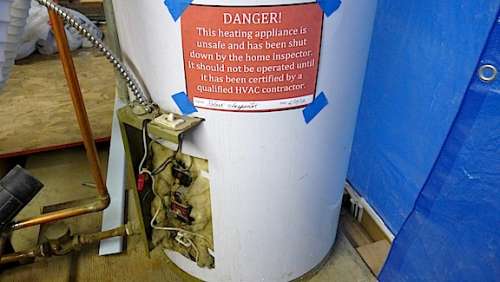Electric Heating Systems
Inspectors may find a number of different types of electric heating systems installed in homes, including the following.
Electric baseboard heaters are the most common type of electric heaters. They’re installed in individual rooms as the heat source for that room. Electric-resistance heating heats metal fins that radiate heat into the room. The fins are encased in metal covers that help prevent flammable materials and people and their pets from coming into direct contact with the hot fins.
Electric radiant systems typically consist of wires installed behind drywall almost always located in ceilings. The wires heat the drywall, which, in turn, radiates heat into the room.
Electric central heating systems are powered by electric furnaces or boilers. These are generally uncommon.
Wall and floor-mounted electric heaters are designed to heat individual rooms.
These systems are all relatively safe to inspect. They are controlled by a thermostat mounted either on a wall or on the face of the heater.
It is possible that people who are not qualified to work on these systems could leave an energized conductor in contact with a metal portion of a heater with which an inspector could come into contact.
In testing older baseboard heaters during the cooling season, inspectors should remember to turn heaters off before leaving the inspection because there is a chance of starting a fire if a heater malfunctions.
Electric water heaters are common across North America. Typically, they are not dangerous to inspect unless they have exposed electrical wiring.
Obviously, exposed electrical wiring is a dangerous condition with any electric heating appliance.
